Although we expected the hike in from the Hellroaring Creek trailhead to eat up around five to six hours, it wasn’t more than a half hour into the hike when, imagining that a vista worth taking in lay at its edge, we broke from the trail to wander up through a stand of scrub pine to the lip of a small ridge. Upon doing so, we caught our first glimpse of the Yellowstone River, coursing through the canyon below. The river was half obscured by a lower hillside, but what our perch revealed to us was enough to convince everyone involved that what had led us across the country and to the lip of that ridge was a series of incredibly good decisions.
It wasn’t long after returning to the trail that it broke around a corner and revealed to us a far-reaching meadow from which we were afforded a more complete view of the Yellowstone far beyond. Shortly thereafter, we began our descent into the canyon, and our next full view of the river would come over five hours later.
The plan developed over the previous winter was to spend a few days in Yellowstone’s Black Canyon, which sits just below Yellowstone’s Grand Canyon, and is famous for its prolific mid-July salmonfly hatches. Since we were arriving a few weeks after prime salmonfly season, we’d been told we likely not see another fisherman during our time on the river, though we scarcely believed it. After fishing the Yellowstone in the canyon, we’d rise early, hike 7 miles out of the canyon, break for lunch, hitchhike back to retrieve our vehicle, move trailheads and knock off three more miles on our way into the comparatively lush Lamar Valley for two days of fishing on the middle Lamar River and Cache Creek.
My job was simple: travel into Yellowstone’s hinterlands with a group of long time friends, enjoy the preposterous bounty of backcountry fly fishing and return to author a piece focusing mainly on how spectacular the fishing was and how we found it to be so because we ditched our cars and our comfort zone and headed miles into Yellowstone’s backcountry to find it.
Some time later, that piece has never materialized, mostly because I don’t care to write it.
It’s not that the fishing wasn’t spectacular. It was. And it’s not that venturing into the backcountry didn’t significantly improve the fishing. It did. It’s just that the story that’s been in my mind since I left Yellowstone isn’t a fishing story. It’s simply one about being there, and that’s a considerably more difficult story to tell.
There’s a pervasive sense of presence that sets in not long after wandering down one of Yellowstone’s trailheads but lingers far too briefly after returning. It’s a sense of being blood and bone, comfortably dumbed down from whatever abstract image of existence we’ve imagined for ourselves, mixed in with the backdrop of Yellowstone in which everything — even the rocks, dust and dirt — seems alive and filled with purpose.
Despite the fact that it was August in the canyon, where soaring daytime temperatures and arid conditions send most wildlife fleeing to more hospitable regions of the park, the group’s overdeveloped fear of a bear encounter compelled each of us to relentlessly clamor on about something or other — intentionally over-volume, the way a melodramatic girlfriend might voice her half of a public argument, with the not-at-all-subtle goal of embarrassing you in front of onlookers and passers-by — in an effort to ward off any grizzlies that might be lurking out of sight.

Grasshoppers buzzed and clacked through the dusty grass at our feet as we made our way across a series of expansive, grassy hillsides on our descent which would lead us to Hellroaring Creek. I’ve since cursed the moments leading up to our fording the creek, where the decision was made not to endure the mild inconvenience and expense of time that would be required to wet a line in Hellroaring’s wonderfully brisk, impossibly clear waters. Despite the promise of what would assuredly have been spectacular fishing, the lure of the Yellowstone ahead was too much to allow us to stop.
The August sun beat down on the back of our necks, reminding us to keep water in tow, and we refreshed our supplies from the creek. We then left Hellroaring behind, and slowly ascended the Yellowstone River trail, which for miles led us away from the river, through a series of meadows and along the edges of a sparsely forested rocky landscape which formed the walls of the canyon. We were regularly afforded vistas of the valley below and often able to guess at where the Yellowstone coursed below, though never actually able to see the river itself.

Sometime in the early afternoon, with at least two hours behind us since our shoulders had first begun to ache from the weight of our ignorantly overstuffed packs, the trail crested and perched us atop a rock where we could see that the Yellowstone and our river home for the next two days were squarely in view. Relieved by the prospect of laying down our packs and lured by the bounty of the river, we scrambled on reinvigorated legs down last half mile of trail to our campsite, our brains reminding us once more to shout salutations to bears that may or may not be lurking unseen amidst the trees or around the next rocky outcrop.
Resting only long enough to allow the searing pain in our shoulders to dull a bit, we pitched tents quickly but properly on a level patch of ground overlooking the river, strung up our rods, donned our wading boots and scrambled hastily down a rocky slide to the river’s edge. Trout were rising sporadically throughout the stretch of water that ran right by camp, and we plucked a couple fish from the riffles using small foam hoppers, missing more strikes than we didn’t. The day’s remaining daylight hours, or most of them at least, were devoted to exploring the river, plucking fat cutthroat from boulder-lined runs along the shore and enjoying the stillness where, miles into Yellowstone’s backcountry, we had discovered our own private fishery.

The two days that followed were spent much the same; marching up and down a mile or so of river in either direction, chasing native cutthroat, stumbling on abandoned bear dens, hiking along the canyon’s hillside, napping along the riverside in the hot afternoon sun. In the morning we cooked oatmeal and boiled tea on the camp stove and for dinner had hearty meals of dried beef and couscous or rice and beans. At night we washed our pans in the river, hung our packs high above camp to avoid creating easy meals for bears and crawled into our tents with muscles perfectly sore from a day spent fishing, hiking and clambering along the river. And all the while, we had Yellowstone to ourselves.
There’s a comfort to the sense of mortality that the backcountry instills in its visitors, to the sense of smallness that comes with leaving the road behind in Yellowstone. Knowing that a turned ankle can mean disaster or that a swim in the river could be your last should be discomforting, but it’s not. There’s an apt belonging in being just another animal loose in Yellowstone’s wilds.

On the third day we set out for the Lamar River Valley, trekking down the Yellowstone River trail which, in part of the canyon, tightly hugs the river for miles. We lamented the sections of rivers we hadn’t traveled far enough from camp to explore, and planned our return in the years to follow. Almost every break through a forest stand or turn around a bend revealed a stretch of water that simply begged to be fished, each devoid of anglers or people at all, just like the one before it.

We blew our exit of the canyon by several hours. After crossing the Yellowstone on a high bridge, the way out of the canyon by way of Blacktail Deer Creek trail is a long, grueling ascent and one that was worsened by our overburdening load of unneeded gear. The climb out is a beautiful one, following the small, rocky tumbling Blacktail Deer Creek and affording big views of the canyon and the expanse of the park. We slogged on for the better part of a day, dogged by a curious coyote for a long part of the hike out, and by the time we lumbered across Grand Loop Road to the trailhead, we’d forfeited any chance of making it into our Lamar Valley campsite before nightfall.

Instead, after a long but day-hike length trek back down one of Yellowstone’s trails, we fished a different section of the Lamar the following day. We were charmed by the Lamar’s character and beauty, unique from that of the Yellowstone where it courses through Black canyon, and by its feisty trout. Despite the solace that we also found as we plied the Lamar’s waters, we bemoaned our poor planning that led to us missing our targeted section of the Lamar at its confluence with Cache Creek that was said to be even more intimate and more flush with trout, and so we planned our return.
And it's not just what we missed of the Lamar that beckons we return. It's the Yellowstone we glimpsed on the way out of the canyon, it's the park's other famed, big rivers like the Firehole and the Madison. It's the creeks like Hellroaring, Slough and Cache. It's simply being there. All of Yellowstone starts calling you to return, not longer after you leave, and it doesn't cease until you do.





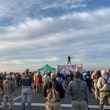

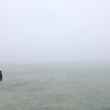



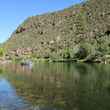
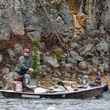



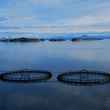
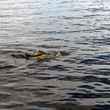



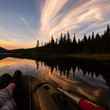
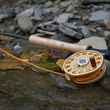



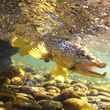
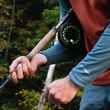


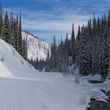
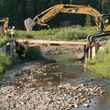
Comments
Joe Esparza replied on Permalink
I can see why it took you awhile to write this article. Great job in writing this. We live in a world that makes it difficult to put up with discomfort for the reward of presence! Well written.
Tight Lines,
Joe
Jeff Chang replied on Permalink
Was there in mid-August, at the confluence of Black Tail Deer Creek and the Yellowstone; crossed the same bridge in the process. Your words and feelings are spot on. The Yellowstone is a woman with whom a brief encounter will change your life and you'll search for her in every passing crowd. The solitude is as rewarding as the cutties. I was planning my return on the hike out... Great piece. Maybe I'll see you out there sometime. Hopefully not.
Chad Shmukler replied on Permalink
Well said, Jeff.
Ross Slayton replied on Permalink
X it's why I moved to Eastern Idaho, to be within a stones throw of the waters you wrote about. It's so hard to write about solitude and that feeling of being totally detached from the worries and concerns of the modern world, replaced of course by the pri.al feeler gs of preservation where grizzlies are concerned, and rightly so. I love this part of the country try and I do to think I will ever leave.
Pages